Historical and Preservation Society of Pottawattamie County
County Seat Council Bluffs, Iowa
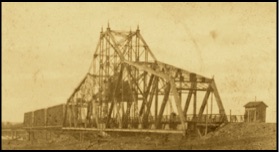
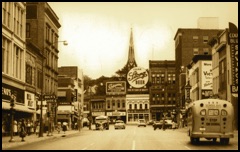
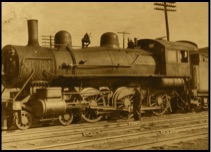
(Story by Richard Warner. Dr. Warner serves on the board of directors of the Historical and Preservation Society of Pottawattamie County.)
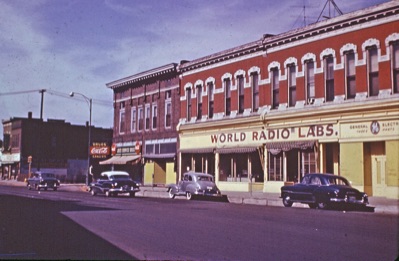
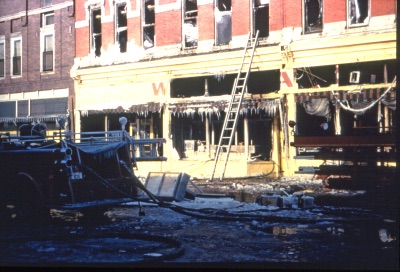
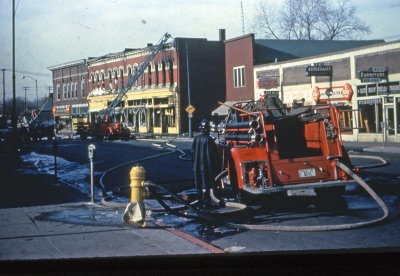
The House the Hams Built
“High Tech” wasn’t always synonymous with Silicon Valley. For many years it was Council Bluffs that was home to one of the most innovative electronics companies in the country.
What was most recently known as World Radio actually traces it’s origin back to one individual. Leo Meyerson began tinkering with electronics at the age of nine, turning oat meal boxes and even toilet paper rolls into radio coils. Meyerson was born in Omaha, but the family moved to Council Bluffs when he was 8 after his father got a job with Peoples Department Store.
Despite his fascination with radio Meyerson almost embarked on a music career. He started playing the organ to accompany silent films at the Liberty Theater to earn a little money to support his radio hobby but found he enjoyed it and was good at it. At the University of Nebraska in Lincoln he formed a piano duo with Leo Skalowski. “Leo and Leo” had their big break when a talent scout lined up an audition for them for the Orpheum circuit. Tragedy struck when on the way to the audition Skalowski died in a car accident. Discouraged, Meyerson left school and returned to Council Bluffs.
Using a $1000 loan from his father and a budget so tight he slept in his car at night, Meyerson started a radio parts store at Seventh and Broadway in Council Bluffs he called Scientific Radio Products Company. Meyerson expanded the scope of the business by taking old radios as a trade-in and repairing them for resale, as well as soliciting mail orders under the name Wholesale Radio Laboratories.
When World War II broke out most regional beneficiaries of the government’s war spending were on the Nebraska side of the river, but Meyerson’s company garnered large military contracts for the production of quartz radio crystals. The wartime demand for radio crystals— the component that communications equipment used to determine operation frequency— was acute. Meyerson changed his focus toward production of quartz crystals to sell to the Signal Corps. Working with his father and others he was able to devise ways to mass produce the crystals, accelerating what had up to this point been a slow and time consuming process. The initial order of 10,000 crystals was followed by more orders. The Council Bluffs company met the demand, earning several awards from the Army and Navy for it’s fine and timely work in the process. At the peak of wartime production the company employed several hundred people and even had it’s own company newspaper, the Crystal Gazer. William Petersen, a friend of Meyerson, likewise produced crystals locally. Petersen Radio Company was located at 28th and Broadway.
Following the war Meyerson's company continued as World Radio Laboratory, focussing on equipment for ham radio operators. They were one of the first to make amateur radio gear available in kit form. The company is also credited as a pioneer of transceivers— a combination transmitter and receiver in one unit.
While working with World Radio Meyerson also formed several related companies. Globe Electronics introduced one of the first Citizen’s Band radios in the mid 1950s. It’s Globe Scout and Globe King transmitters became ham radio legends. Meyerson also formed the World Radio Export Company and Galaxy Electronics. Under the Galaxy name Meyerson positioned himself as a technology leader by marketing one of the first single side band transceivers available to radio amateurs.
The company built a large facility in the 3400 block of West Broadway in 1954 to house its manufacturing, local sales, and mail order operation. “The House the Hams Built” featured a tall tower of antennas on Broadway connected to a variety of ham radios that were always up and running, with radio amateurs welcome to stop in and chat around the world. The firm offered free Morse code classes for aspiring radio operators and stocked every electronic part and component imaginable for those who wanted to build or repair their own gear.
Just days before the move to the new building a passerby saw smoke from the old building at 7 am. He pounded on doors of the second floor apartments to awaken the residents; the portion of the second floor that had housed Boyles Business College was vacant but there were eleven occupied apartments. Damage was extensive and firemen had to use caution due to toxic gasses produced when heat attacked a fifty gallon drum of carbon tetrachloride in the basement.
Leo Meyerson brought in son Larry, who took over as president of the company. In the 1960’s consumer electronics came on the scene and World Radio Laboratory— by then known simply as WRL— changed it’s focus to providing the home entertainment gear that was coming into demand. The company did well in the CB radio boom of the 1960s and 70s, manufacturing the popular Rustler and Rustler II radios at their Council Bluffs plant and sold nationally at competitive prices.
The company also expanded beyond Council Bluffs, at it’s peak operating 24 stores in four states under the World Radio name. In 1989 sales were estimated at $40-45 million dollars, making it at that time one of the largest electronic equipment retail chains.
The Meyersons sold World Radio. Since then the intense competition of the consumer electronics business caused first the consolidation of the operation into just a few stores and eventually closure of the company entirely.
Leo Meyerson retired to California. He passed away in 2011 at the age of 100.
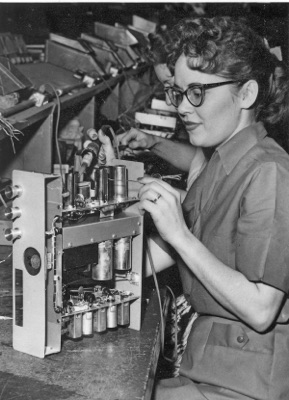
At the height of World War II thousands of radio crystals were produced by World Radio Laboratories at 7th and Broadway.
Just three days into 1954 the city experienced what would prove to be the worst fire of that year. A three alarm blaze destroyed the World Radio building at 7th and Broadway. Seeing smoke a passerby pounded on the doors of the eleven second floor apartments giving the residents ample time to flee to flee to safety.
Helen Faris assembles a citizen band radio at World Radio Laboratories facility at 3415 West Broadway in 1959.